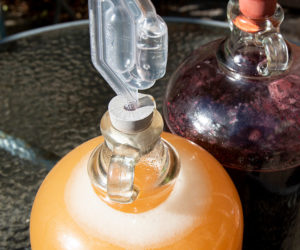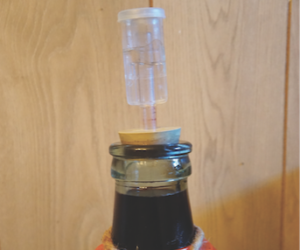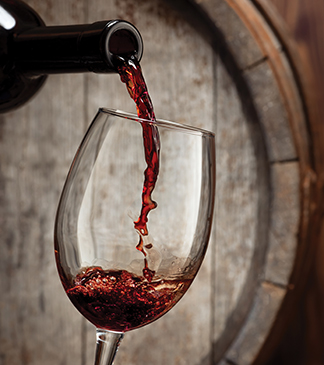
When a person starts off on their winemaking journey, they research the basics. One gets an understanding of the various grape varieties available to them, yeast strains that are complementary to the varieties, and how to sterilize, rack, and bottle. When fermentation is discussed, most folks learn that the yeast will consume the available sugars, metabolize it into alcohol, and that’s how we get our beloved homemade wine. As they start to learn more about the process of making wine, particularly red wines from grapes, they first come across the term “malolactic fermentation,” or MLF, being utilized. You wouldn’t be alone if your first reaction to that is confusion or wondering just how many kinds of fermentation are involved in wine, followed by questioning what MLF is for and whether it is necessary.
After a bit of investigation, not only will the new winemaker find a myriad of suggestions and opinions on malolactic fermentation, but they will find that many of them are contradictory. What’s a winemaker to do? In the course of this article, I hope to guide you through the process of malolactic fermentation, investigating its purpose, limiting criteria, methods, and troubleshooting.
To understand malolactic fermentation, we will begin by reviewing the major acids in grapes and their resulting wines: Tartaric acid, malic acid, and citric acid being the three with the highest concentrations. Tartaric acid occurs at naturally high levels within grapes and is the most prevalent acid. Tartaric provides the most refreshing acidity in the flavor of our wines. Malic acid is the second largest concentration within grapes, giving a slightly more pronounced tartness to grape juice and wines. Citric acid is prevalent in much lower amounts than the previous two. For the purpose of this query, malic acid is the primary acid of concern.
Malic acid was first identified in the 16th century and isolated from apples, hence the name being based on malus, the Latin root word for apple. The first initial observations of the metabolism of this acid were in the 1830s by winemaker Freiherr von Babo. The famous microbiologist Louis Pasteur was able to identify and isolate malolactic bacterial cultures from wine in 1866. Further studies of these bacterial cultures by Hermann Müller-Thurgau in 1891 proved their function and impact upon the flavor of wine and their importance to the development of balanced wine flavor and stability. The presence of malic acid in wine gives a stronger tartness, an attribute desired in most white wine styles but undesirable in most red wines. Müller-Thurgau realized that the presence or purposeful addition of specific bacterial strains would metabolize the acid, giving a less tart flavor and creamier mouthfeel to the wines by the metabolism of the malic acid into lactic acid. The strains of Oenococcus oeni have been isolated, preserved, and then cultured in laboratory settings to yield the various types of malolactic bacteria now available to winemakers.
While this delve into the history of the infamy of a bacterial strain may be of interest to some, what does it mean for the wine you would like to make? Many home winemakers have asked me, “Is this really necessary for red wines?” My answer is almost always yes, for two reasons: The first being the flavor of the wine. The addition of this step to the fermentation process brings the wine from tasting harsh to a much smoother and richer flavor on the palate. The second reason, and equally as important, is it will contribute to the stability and aging potential of the wine. We know that we do not live in a sterile world, with microbes living on every surface we come in contact with, including our own bodies. If one does not purposefully introduce malolactic cultures into the wine, they will find their way into the wine via their own methods, often being present on the grapes themselves or in the winery equipment or barrels. These unwanted guests can lead to rogue fermentations later on in the life of the wine, resulting in spritzy or fizzy characteristics in what should be still wine. It can further metabolize acids in grapes, giving undesirable off-flavors and aromas if not kept in check.
Conducting a Malolactic Fermentation
Malolactic fermentation will convert the light, fresh quality of a white wine into a richer, more buttery flavor. This is often a desired characteristic within Chardonnay production. It will take some of the dominant apple flavors within Chardonnay grapes and metabolize them into a softer, buttery flavor and corresponding creamy mouthfeel that is appreciated as a stylistic choice. This fermentation may not be appropriate for a Sauvignon Blanc or Grüner Veltliner, where the bright tartness and acidity are the prized attributes of the varietal styles. MLF is desired for nearly every red wine style (there are a few exceptions, such as Beaujolais nouveau). It will help to enhance mouthfeel and reduce any strong, biting acidity, creating a smoother sensory experience. As a professional winemaker, I do put all of my red wines through MLF and also conduct it in my Chardonnay, as I desire those smoother, less acidic characteristics within my finished product.
Now that we have discussed the varieties that may benefit from this secondary fermentation, how do we know whether it’s right for our specific batch of wine? I have implemented a checklist of criteria for a batch of wine to help evaluate it for its preparedness for MLF. This is a checklist I use myself, which you will find below. A wine that does not fit the parameters may need some adjustments before the inoculation of the MLF bacteria.
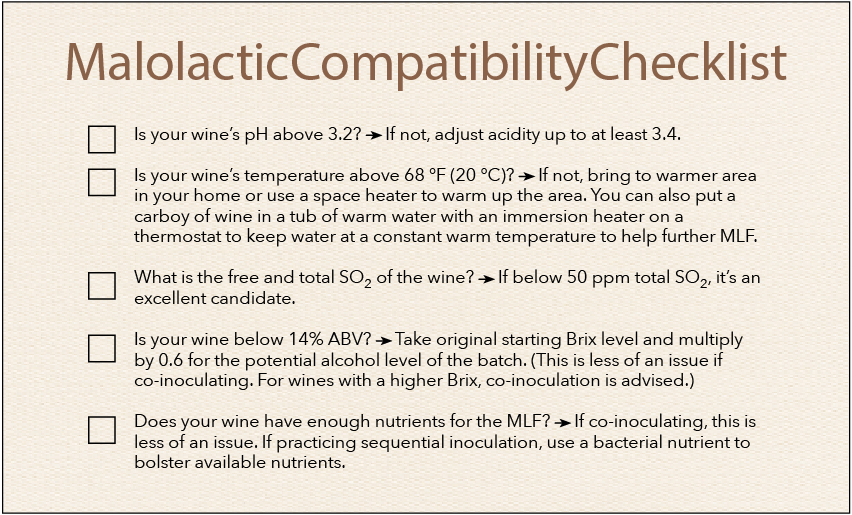
The first criterion to consider is the SO2 levels within a wine. Oftentimes we will sulfite our grapes or juice to 50 ppm before fermentation to stave off any wild yeast or microbes from starting to feast upon our product. While I do advocate for this as a necessary step to ensure a healthy primary alcoholic fermentation, it must be done carefully and with accurate measurements. If a winemaker receives fresh juice, it is imperative to take a measurement of the free as well as total SO2 quantities within the juice or must before the addition of any sulfites. Many processing facilities will add the 50 ppm of sulfites for you to ensure the stability of the product while in transit. Blindly dosing your juice or must with 50 ppm of sulfites before fermentation may harm your secondary MLF in the long run. Malolactic bacteria are incredibly sensitive to SO2 and most strains cannot survive total SO2 concentrations over 60 ppm. Concentrations over 60 ppm will either deplete the malolactic bacteria population to a point where they cannot complete the fermentation or kill off the population completely.
The overall acidity, measured as pH, will also have a direct impact on the viability of a batch of wine as a candidate for MLF. Too much acid, and the bacteria will not be able to thrive and reproduce. Generally, a pH above 3.2 is desired for a successful MLF. The higher the pH, the less encumbered the bacteria will be. Each strain of bacteria has its own criterion so it is important to review these criteria when selecting your strain to ensure it is compatible with the wine you plan to inoculate. If your wine is high in acids and has a pH below 3.2, you may want to consider chemically reducing the acidity before the addition of the malolactic bacteria. By chemically reducing the acidity, it will make the wine less harsh and make the MLF fermentation go along faster and with a higher success rate. A simple way to adjust acidity upfront would be by using potassium bicarbonate. As with any addition within winemaking, a series of bench trials should be conducted to ensure that the results are agreeable to the winemaker’s palate before administering the treatment to the entire batch.
Another limiting factor for malolactic bacterial strains can be the temperature of the wine. Bacteria prefer warmer environments and will not want to ferment at temperatures below 68 °F (20 °C). While some strains do have slightly wider temperature windows of tolerance, keeping the wine warm is critical to the health and viability of the bacterial population. If the wine gets cold, the bacteria may become dormant. I have seen many a home winemaker assume this means that they have completed their fermentation, only to have the wine warm up months later as the ambient temperature in the storage area rises, or in the bottled product kept at warmer temperatures, and the bacteria will re-awaken and begin fermenting, resulting in fizzy bottles or blown out corks and a large mess.
The final critical criterion for evaluating a wine batch for MLF is the overall alcohol level of the wine. As we know from health class, alcohol kills off germs, which is why it is used in antiseptics. Malolactic bacteria are delicate creatures, with a relatively low tolerance to alcohol concentrations. The more alcohol in a wine, the more challenging the MLF will be. Any wine over 14% alcohol is considered a challenging environment for the bacteria. There are some ML strains that will handle over 14%, but all other aforementioned criterion must be evaluated along with this to ensure that bacteria will not face any other restrictive conditions.
Sequential Inoculation vs. Co-Inoculation
Once you have reviewed these elements (temperature, pH, free and total SO2 concentrations, and ABV) of your candidate for MLF, it is time to consider when you would like to conduct your malolactic fermentation. The traditional method was to wait until the completion of alcoholic fermentation, then to inoculate with the malolactic culture and conduct MLF over the weeks following primary fermentation, known as sequential inoculation. This gives the winemaker only one fermentation to monitor and track at a time. It also allows a red wine fermentation to cool down slightly before the addition of the bacteria. If the winemaker can ensure a warm environment for their wine throughout the MLF process, sequential inoculation may be advantageous for the newer winemaker. I’ve often received the question, “Will racking my wine interrupt the MLF process?” Due to the great proliferation of the bacteria, there should be plenty within the suspension of the wine to successfully complete, regardless of the number of rackings conducted. Great care should be given in racking as to not accidentally introduce excess SO2into the wine via some residual sanitizing strength sulfite solution left in the bottom of the receiving vessel or transfer tubing.
Throughout the initial fermentation process the yeast not only consumes sugar in their metabolic process, but other micronutrients as well. Oenococcus oeni bacteria also require additional nutrients aside from the malic acid that they consume to aid in completing a healthy fermentation. If adding the bacteria post-alcoholic fermentation, additional nutrients should be added alongside the bacterial culture to ensure that they have everything they need for a successful and relatively fast fermentation. If nutrients are not added, then the malolactic fermentation can drag out for months. This can be a long time for a wine to go without sulfites, and some minor oxidation can occur.
When I started making wine professionally over a decade ago, I practiced sequential inoculation for many of the reasons stated earlier, but primarily to keep things simple with one fermentation to monitor at a time. Now as I have advanced in skill, lab equipment, volume of wine produced, and confidence, I prefer co-inoculation of bacterial cultures. The benefits of sequential vs. co-inoculation have been debated over by great wine scientists for decades. It completely satisfies my favorite winemaking joke of, “Ask ten winemakers a question and you’ll get eleven opinions.” While there is nothing wrong with either approach, I hold the opinion that co-inoculation of the bacteria with the yeast cultures holds some benefits. Co-inoculation refers to the addition of the bacterial culture 24–48 hours after the addition of the yeast culture. This gives adequate time for the yeast to acclimate and begin their reproductive cycle to build up a population capable of fermentation. It will also increase the temperature of a juice/must, as alcoholic fermentation is an exothermic process.
As just discussed, bacteria require micronutrients to conduct their fermentations. Unfortunately, they utilize many of the same micronutrients that yeast also consume. If added at the beginning of alcoholic fermentation, they will benefit from the nutrient-rich juice/must and benefit from the yeast nutrient additions. There are two forms of nutrients that can be added with the bacterial cultures. There are rehydration nutrients, such as Scott Labs Acti-ML, that will help the bacteria to quickly build up a larger population, and there are general malolactic nutrients, such as Scott Labs Opti-Malo Plus, which are added at the onset of MLF, but not mixed directly with the bacterial culture. I find both of these are essential when practicing sequential inoculation, yet only the rehydration nutrient is necessary when practicing co-inoculation due to the availability of other nutrients.
Another factor within early stages of alcoholic fermentation that is conducive for the bacteria is the lack of alcohol. The lower concentration will help the bacterial population thrive and build up a healthy population. It is not to say that they will deplete as the yeast creates alcohol, but will slow their pace as the alcohol level increases. Adding them to the wine while the alcohol concentration is low will speed up their metabolism of the malic acid.
While there are many benefits to co-inoculation of the bacteria with the yeast cultures, there are risks as well, often contingent upon the goals of the winemaker. The Oenococcus oeni will not only metabolize malic acid, but citric acid as well. The metabolized citric acid will generate diacetyl, which is a compound responsible for the butter character within wines that have gone through MLF. If co-inoculated, the yeast will help to break down the diacetyl and the result will be fresh, fruity aromas and flavors. The complex and robust red wine aroma compounds often mask the majority of diacetyl contributions to the aroma of a red wine. While this may sound lovely for a red wine, it may not be desirable for a Chardonnay that the winemaker would like to make in a buttery style. In that instance, the winemaker would be better off practicing sequential inoculation of the bacteria, allowing for the development of some diacetyl in the wine, building that buttery flavor. There is a critical tipping point for the development of diacetyl. While some diacetyl can create a rich, lavish Chardonnay worthy of pairing with a lobster roll, too much diacetyl production (above 5 mg/L) can result in a rancid butter flavor, butterscotch aroma, or cheesy, whey-like aroma.
Monitoring MLF
Once malolactic fermentation has begun, how does a winemaker monitor and check for completion? The goal of malolactic fermentation is to convert the malic acid to lactic acid in the batch of wine. The winemaker must then test for the presence of malic acid to see if the bacteria have completed their mission.
There are multiple ways to test for the presence of malic acid. Many winemaking shops carry the Accuvin test strips that detect the presence of malic acid via a test strip and show a color comparison of the test strip to a chart to determine the amount of acid present. While this is a very basic and inexpensive method, it is often difficult to discern the hue of the test strip in comparison to the chart and it is highly subjective.
The next level of testing as far as cost and level of difficulty would be paper chromatography. This method is widely used and user friendly. Kits are sold for around $100, and are capable of testing many wines, making the cost per test quite low for the winemaker. This again determines the presence of malic acid via a color contrast on the test paper after a reaction to a developer solution and can sometimes be difficult to read. Utilizing the specialty chromatography paper, the winemaker applies small drops of wine and acid standards to paper with a pipette. The paper is then rolled up into a cylinder and fastened with a stapler. The paper tube is put in a jar with a small amount of developer solution to allow the solution to work its way up the paper. After about five hours, this process is complete and the paper should be removed from the jar and allowed to dry overnight. The results will show any remaining presences of malic acid and the accrual of lactic acid. It takes a little bit of time and practice to get skilled at reading the results, but overall, the cost and effort are worth it for this method
of testing.
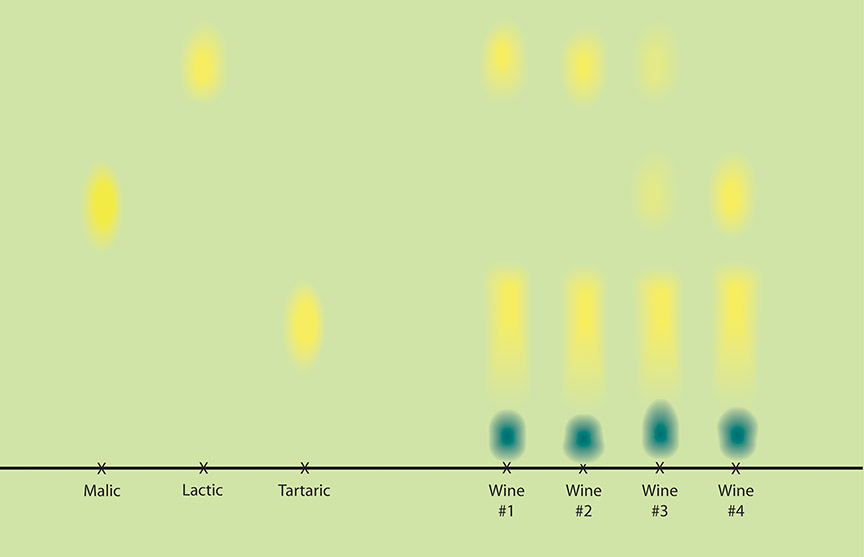
Lastly, there are a number of different meters available on the market that will provide a digital readout of the amount of malic acid present in the wine. Vinmetrica, Hanna Instruments, and Sentia all make various styles of malic acid analyzers at various price points (much higher than paper chromatography) that can read the amount of malic acid in just a few minutes with a very small sample of wine. A value for the completion of malolactic fermentation would be a malic acid concentration less than 30 mg/L. These meters are the most effective way to determine the completion of malolactic fermentation.
While malolactic fermentation is relatively easy to inoculate, oversee, and test for, it is not without its own unique set of potential hiccups. The checklist can help you evaluate if your wine is a good candidate for malolactic fermentation and can help to troubleshoot any problems with having a successful fermentation. Every batch of wine may take a different amount of time to complete fermentation, contingent upon the limiting factors discussed. Never fear, while it may take a few weeks or even up to a few months to complete, the slow evolution of malolactic fermentation is worthwhile.


